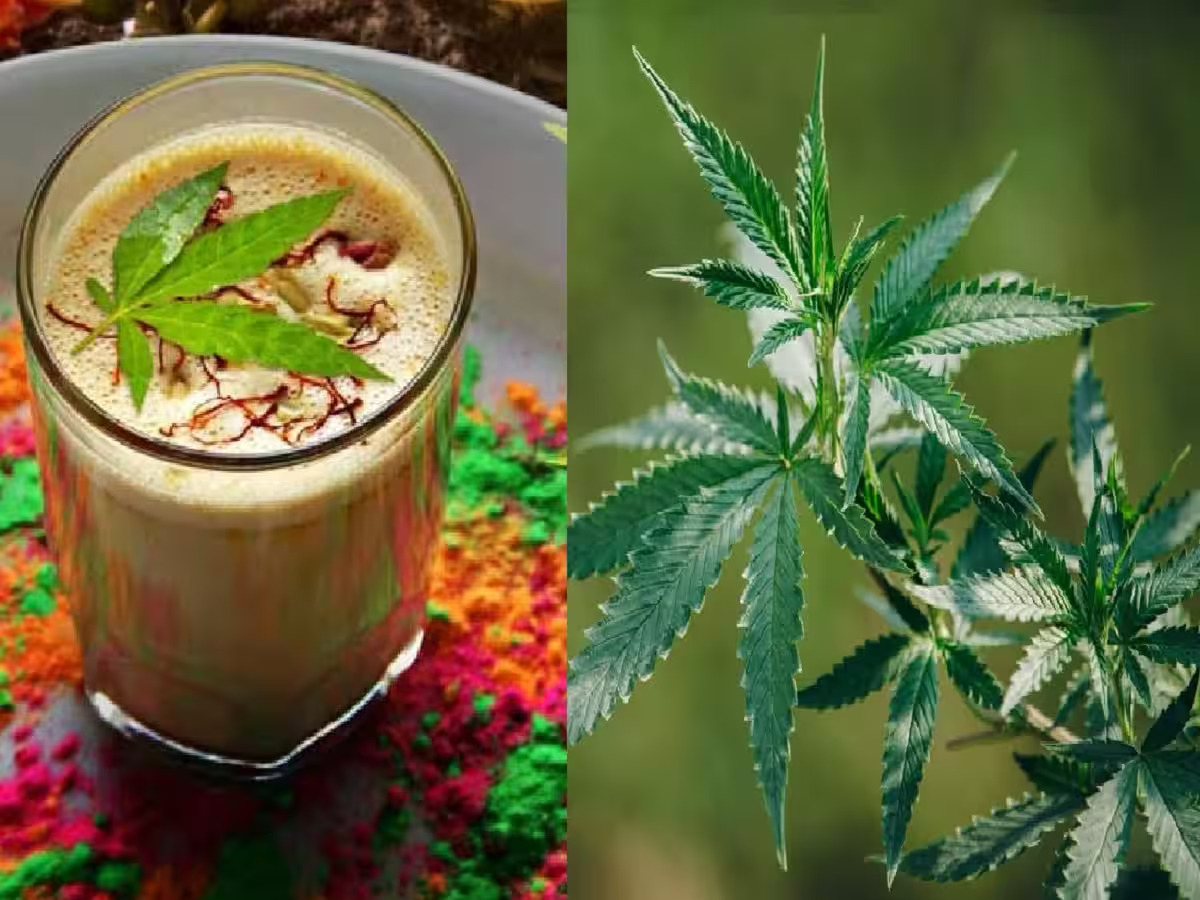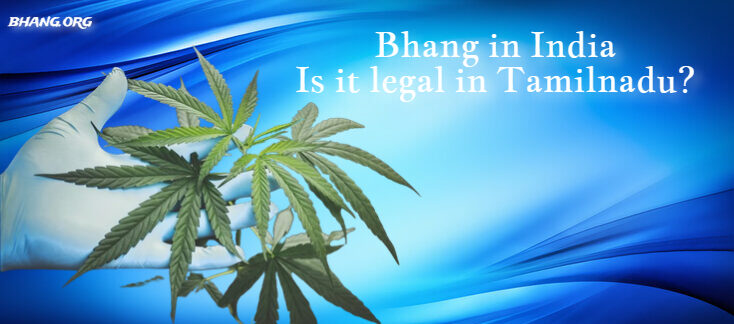
What is Bhang: Its Health Benefits and Safety Concerns
Bhang and Health Benefits: Bhang, a paste crafted from the buds and leaves of the Cannabis sativa plant, is traditionally infused into food and beverages. It is believed to offer relief from conditions like pain, muscle spasms, seizures, nausea, and vomiting. However, it’s important to acknowledge that bhang also poses risks and may not be suitable for certain individuals.
In India, bhang has been a culinary and cultural staple for millennia, finding its place in Hindu customs, ceremonies, and festivities such as the renowned Holi festival. Moreover, it holds significance in Ayurvedic medicine, where it is touted as a remedy for various ailments, including nausea, vomiting, and physical discomfort.
This article provides an overview of bhang, examining its potential benefits and safety considerations.
What is bhang and how is it made?
Bhang comes to life through a careful process of drying, grinding, and infusing the buds and leaves of the Cannabis sativa plant. This detailed method results in a smooth paste that easily blends into your favorite foods and drinks.
For centuries, bhang has been a part of Indian culture and consumption practices, despite the legal restrictions surrounding cannabis in most regions of the country. Notably, its use appears to be more tolerated, particularly in religiously significant cities, where it is available for purchase from street vendors and officially sanctioned outlets.
It’s worth noting that according to the Indian National Policy on Narcotics and Psychotropic Substances, only the leaves of the cannabis plant are permitted for use in bhang preparation.
Bhang can be enjoyed in various forms. One popular method involves blending it with curd and whey to create a beverage known as bhang lassi. Another common option is bhang goli, a drink made by mixing freshly ground cannabis with water. Additionally, bhang can be combined with sugar and ghee (clarified butter) to make confectioneries.
In essence, bhang is made by grinding and soaking parts of the Cannabis sativa plant, resulting in a paste that serves as a key ingredient in cannabis-infused culinary delights.
How does bhang work?
Bhang is renowned for its psychoactive effects, altering the function of the brain and nervous system.
These effects are primarily driven by cannabinoids, the key active chemical compounds found in the Cannabis sativa plant. Among the various cannabinoids present in bhang, two are extensively studied:
- Tetrahydrocannabinol (THC): This compound is primarily responsible for the euphoric sensation, commonly known as the “high,” experienced by individuals consuming bhang-infused foods and drinks.
- Cannabidiol (CBD): Unlike THC, CBD is not psychoactive. It is believed to be the primary compound responsible for the potential health benefits associated with bhang consumption.
Both THC and CBD have molecular structures akin to endocannabinoids, natural compounds produced by the body. These endocannabinoids bind to cannabinoid receptors in the body, influencing functions such as learning, memory, decision making, immunity, and motor function.
Due to their structural similarities, THC and CBD can also bind to these cannabinoid receptors, affecting how the brain communicates between its cells.
When dried parts of the cannabis plant are smoked or vaped, cannabinoid levels in the bloodstream peak within 15–30 minutes. Conversely, when cannabinoids are ingested as part of food or drink, their release into the bloodstream is significantly slower, peaking around 2–3 hours after consumption.
In essence, bhang contains THC and CBD, compounds that can bind to the body’s cannabinoid receptors, influencing various bodily functions such as learning, memory, motor skills, and immunity.
Preventing Nausea and Vomiting with Bhang
Bhang has shown promise in alleviating nausea and vomiting, particularly in individuals undergoing chemotherapy.
THC, a prominent cannabinoid present in bhang, has received approval for treating nausea in certain regions of the United States. Studies have extensively explored its anti-nausea and anti-vomiting effects, primarily in cancer patients undergoing chemotherapy.
A comprehensive review of 23 randomized controlled trials revealed that individuals receiving cannabis-based products were nearly three times less likely to experience nausea and vomiting compared to those given a placebo. Furthermore, these cannabis-based products demonstrated efficacy comparable to conventional anti-nausea medications.
Additional reviews have highlighted compelling evidence supporting the effectiveness of cannabinoids, the primary active compounds in bhang, in reducing nausea and vomiting, particularly in adult chemotherapy patients
However, it’s crucial to note that prolonged and heavy use of cannabinoids has been associated with adverse effects such as abdominal pain, chronic nausea, and severe vomiting, especially among middle-aged men. These symptoms often prove resistant to conventional anti-nausea treatments.
In conclusion, while bhang holds potential in mitigating nausea and vomiting, particularly related to chemotherapy side effects, caution should be exercised regarding heavy and prolonged usage to mitigate the risk of exacerbating these symptoms in certain individuals.
Potential Pain Reduction Effects of Bhang: Bhang and its Health Benefits
Pain alleviation stands as a prominent medicinal application for cannabis derivatives such as bhang.
Various studies substantiate its efficacy in this regard. For instance, a recent analysis of 28 randomized controlled trials (RCTs) underscored the effectiveness of cannabinoids in managing chronic pain and nervous system-related pain.
Moreover, another review examining 18 RCTs indicated that cannabinoids might exhibit heightened efficacy in mitigating chronic pain stemming from conditions like fibromyalgia and rheumatoid arthritis.
Furthermore, a study involving 614 individuals grappling with chronic pain revealed that 65% of those utilizing medically prescribed cannabinoids reported noticeable improvements in pain levels.
In summary, cannabis products like bhang hold promise in reducing pain, particularly in cases associated with conditions such as fibromyalgia and rheumatoid arthritis.
Potential Benefits of Bhang: Muscle Spasm and Seizure Reduction
Muscle Spasm Reduction:
Bhang, a cannabis-derived product, has shown potential in alleviating muscle spasms, particularly in individuals diagnosed with multiple sclerosis (MS), a condition affecting the brain and spinal cord. Evidence from two reviews indicates that cannabinoids, the primary active compounds in bhang, were more effective than placebos in reducing muscle spasms among individuals with MS.
Seizure Reduction:
Moreover, bhang and other cannabis-based products may offer benefits in reducing seizures, especially in cases where conventional treatments have proven ineffective. A recent review of four randomized controlled trials (RCTs) highlighted the potential of CBD-containing products in reducing seizures among children with drug-resistant epilepsy. Another review revealed that a daily dosage of 9 mg of CBD per pound (20 mg per kg) of body weight was significantly more effective than a placebo in halving the frequency of seizures in individuals with epilepsy.
Although promising, further research is necessary to validate these effects conclusively.
Additional Potential Benefits of Bhang: Bhang and its Health Benefits
In addition to its known effects, bhang may provide various other advantages, with some being more extensively studied than others:
Potential Cancer Protection:
Research conducted in test tubes and animals suggests that cannabinoids found in bhang could potentially destroy or restrict the spread of certain cancer cells.
Improved Sleep Quality:
Bhang has the potential to alleviate sleep disturbances linked to conditions such as sleep apnea, chronic pain, multiple sclerosis, and fibromyalgia.
Anti-inflammatory Properties:
Studies conducted in test tubes and animals indicate that compounds present in bhang may possess anti-inflammatory properties, which could be beneficial in managing inflammation associated with various diseases.
Appetite Stimulation:
Increased appetite is a commonly reported side effect of bhang consumption. While this may be advantageous for individuals aiming to gain or maintain weight, it might be viewed as a drawback by others.
Additionally, bhang is occasionally touted as a remedy for several health conditions including anxiety, depression, post-traumatic stress disorder (PTSD), Tourette’s syndrome, dementia, irritable bowel syndrome (IBS), Parkinson’s disease, and schizophrenia. However, the scientific evidence supporting these claims is currently insufficient, necessitating further research for more definitive conclusions.
In summary, while there is emerging evidence suggesting potential benefits of bhang such as cancer protection, inflammation reduction, improved sleep, and appetite stimulation, additional studies are required to fully understand its efficacy and mechanisms of action.
Potential Risks Associated with Bhang Consumption
Despite its potential benefits, the consumption of bhang poses certain health risks that individuals should be aware of:
Psychological Effects:
While bhang is often associated with feelings of euphoria, it can also induce negative psychological reactions such as panic, fear, or depression in some individuals.
Impaired Cognitive Function:
The psychoactive effects of bhang may impair short-term memory, coordination, and judgment. In high doses, it can also lead to feelings of paranoia or psychosis.
Adverse Effects on Brain Development:
Heavy or prolonged use of bhang, particularly during adolescence, may disrupt brain development, increase school dropout rates, and diminish overall life satisfaction.
Potential Mental Health Risks:
Regular consumption of cannabis products like bhang may elevate the risk of certain mental health disorders, including depression and schizophrenia, especially among individuals predisposed to these conditions.
Adverse Effects During Pregnancy and Breastfeeding:
Consuming bhang during pregnancy or while breastfeeding can heighten the risk of premature birth, low birth weight, and impaired brain development in the infant. Therefore, its use during these periods is strongly discouraged by experts.
Risk of Overconsumption:
When ingested as a food or beverage, the absorption of bhang slows down, making it challenging to gauge and regulate intake. This increases the risk of consuming excessive amounts, which can lead to adverse effects such as irregular heartbeat, severely low blood pressure, and confusion.
In summary, the consumption of bhang comes with various risks, including psychological effects, impaired cognitive function, adverse impacts on brain development, heightened susceptibility to mental health disorders, and potential harm during pregnancy or breastfeeding. Additionally, difficulties in regulating intake pose a risk of overconsumption, emphasizing the importance of caution and informed decision-making when using bhang.
Conclusion
Bhang, a mixture derived from the Cannabis sativa plant’s buds and leaves, is commonly incorporated into food and beverages.
While bhang (Bhang and its Health Benefits), like other cannabis products, may offer therapeutic benefits such as pain relief, muscle spasm reduction, seizure control, and alleviation of nausea and vomiting, its consumption also entails risks.
Individuals with certain health conditions or those in vulnerable life stages—such as childhood, adolescence, pregnancy, and lactation—should avoid bhang use.
Moreover, it’s crucial to recognize that the legal status of cannabis and its derivatives varies across states and countries. Therefore, it is essential to acquaint oneself with relevant laws and regulations in one’s area before considering the use of bhang or other cannabis products.
FAQs about Bhang and its Health Benefits
What is bhang and how is it made?
Bhang is a paste made from the buds and leaves of the Cannabis sativa plant, traditionally infused into food and beverages. It is crafted by drying, grinding, and steeping the plant material to create a paste.
How does bhang work?
Bhang exerts its effects primarily through cannabinoids, the active chemical compounds found in the Cannabis sativa plant. These cannabinoids, including THC and CBD, interact with the body’s cannabinoid receptors, influencing various bodily functions such as learning, memory, motor skills, and immunity.
What are the potential benefits of bhang?
Bhang may offer several potential benefits, including pain relief, reduction of muscle spasms and seizures, protection against nausea and vomiting, improved sleep quality, anti-inflammatory effects, and appetite stimulation.
What are the risks associated with bhang consumption?
Despite its potential benefits, consuming bhang carries certain health risks. These include psychological effects such as panic, fear, or depression, impaired cognitive function, adverse effects on brain development, heightened susceptibility to mental health disorders, and potential harm during pregnancy or breastfeeding. Additionally, difficulties in regulating intake can lead to overconsumption, resulting in adverse effects such as irregular heartbeat and confusion.
What should individuals consider before using bhang?
Individuals should consider their health status and life stage before using bhang. It is advisable to avoid bhang consumption during childhood, adolescence, pregnancy, and lactation, as well as in individuals with certain health conditions. Moreover, individuals should be aware of the legal status of cannabis and its derivatives in their respective regions and familiarize themselves with relevant laws and regulations.


